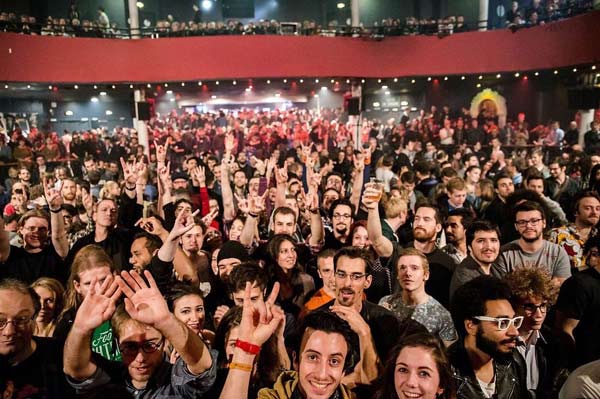
Scrolling through the long list of victims of Friday 13 November 2015 in Paris, we see a heart-rending portrait of a young cosmopolitan generation from very diverse backgrounds: from the banlieues to the world of international architecture. They are not only lucky students who have seen the world on fellowships or foreign tourists enjoying themselves in Paris’s concert venues and trendy bars. Some of the victims were French citizens who had emigrated from Chile as children; others have parents who emigrated from Algeria or Congo in the 1970s.
The victims represent an urban class that is extremely mobile, with networks of relations that spread across the whole world that can be quickly mobilised for work or a place to stay.

However, within the jargon of Dutch immigration policy, the victims of 13/11 would not be considered a single heterogeneous generation but rather a series of highly distinct categories: migrant workers, expats, children of political refugees, and third-generation immigrants. They would be subject to different policies, views, investigations and political opinion. However, their shared tragedy should force us to look more closely at what this generation has in common, and that is: migration. The ‘Génération Bataclan’ inspires us to view migration as a general and fundamental phenomenon in contemporary Europe instead of a series of problems which when viewed separately drive us apart and which, moreover, can never be adequately solved.
Refugees
The initial trigger to write this piece was not the tragedy of the events that took place in Paris on 13 November, but the refugee crisis that the Netherlands and many other European countries have experienced over the past few months. This crisis confronts us with the fragility of how we define and manage our borders. While recent decades have shown that conflicts on the periphery of Europe and beyond have resulted in sudden peaks in numbers of asylum seekers, we were nonetheless ‘surprised’ by the thousands of Syrian refugees arriving in our country, fleeing a conflict that has been going on for years. It necessitated the speedy fitting out of emergency shelters, the commandeering of empty holiday camps, and the erection of tent villages. The hasty response sometimes led to heated confrontations with local communities. The acute urgency of the situation meant that in most cases the COA (the Dutch central organisation for refugee intake) and the IND (Dutch Immigration and Naturalisation Service) had to pay the highest price for locations and had to disregard local objections.
But more telling than the logistics problems are the locations of the majority of shelters: in the less-densely populated eastern and northern regions of the Netherlands. We are familiar with the images of the leafy villages suddenly inundated with hundreds of foreigners, standing lost at a bus stop in the rain; the holiday camps miles from the nearest shop, and the monumental barracks filled with beds. A large majority of the current wave of asylum seekers will be granted the coveted refugee status, whereupon the COA will work together with local authorities to find them permanent housing. This leads to further conflicts, for example with housing associations that have been told by housing minister Stef Blok that they should offer less social housing, with the result that they now have no accommodation to offer to refugees. Because, due to political pressure, Minister Blok is unable to give refugees priority, there is a resulting scramble for locations and buildings. This has led to some interesting conversion projects, such as the headquarters of the Ministry of Social Affairs in The Hague, which is currently being converted into housing for immigrants. Nonetheless, the dominant image is one of a government that has allowed itself to be overrun.
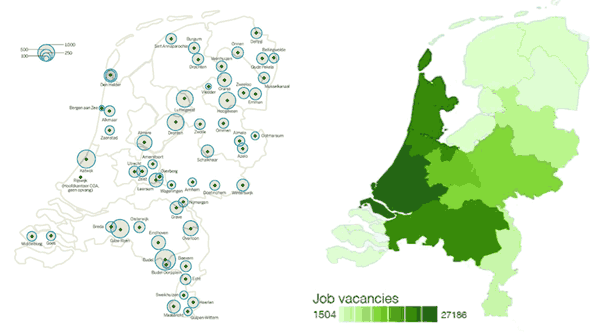
If we superimpose a map showing those locations where asylum seekers are initially housed onto a map showing those regions (mostly in the Randstad) with the most job vacancies, we see little overlap. This is remarkable given that we all want the accepted refugees to be integrated into society as quickly as possible: we want their children to go to school, for them to learn Dutch, that they get jobs and make a contribution to society. Looking at how those seeking asylum are housed, we can only conclude that there is no urban strategy enabling us to absorb them within the heart of our economy, our cities and our communities.
It would be too easy to brush off the refugee crisis as a temporary emergency situation with its own unique set of problems. But that we find it difficult to provide adequate shelter for those that seek refuge in the Netherlands is a symptom of a wider problem concerning the flexibility and absorption capacity of our cities. Furthermore by isolating the refugee crisis we deny the fact that migration has become a fact of life and will only increase in decades to come. The only way to deal with the refugee crisis is to view it not as a separate issue but as a broader phenomenon that concerns not only those fleeing war or poverty but also well-paid expats, migrant workers, nomadic students, architects who travel from city to city and even Dutch workers whose existence has been rendered unpredictable by a more flexible labour market.
The experience of asylum seekers is not dissimilar to that of seasonal workers in the asparagus harvest, Polish workers and so-called EU migrant workers. There are currently some 400,000 migrant workers in the Netherlands, many of whom have poor temporary accommodation in holiday camps, small sublets, caravans or at their places of work. And again the problem is reduced to purely a housing issue. What makes it so difficult to provide adequate housing for this group is precisely the temporary nature of their stay and the many different individual choices they make. Some of them work a few months in the Netherlands each year but keep their main residence in Poland; others decide to live here and start a family; others live here for a few years with their family and then move back to Poland.
The gap that exists between renting and buying houses, between hotels and apartments, between social housing and the private housing sector, and the absence of short-term rental contracts make our housing system unsuited to coping with fluctuations in the demand for migrant workers, whether that concerns the Slovenian asparagus picker or the Canadian expat who works for the International Court of Justice.
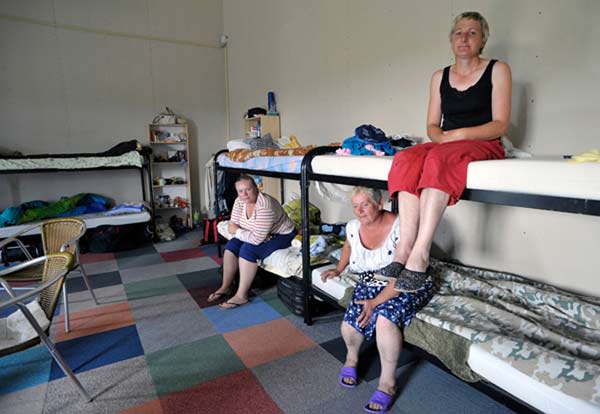 It seems strange to compare the lot of an asylum seeker fleeing terrorist violence in Syria, waiting in a barracks in Drenthe, with the situation of a Romanian plasterer who sleeps in a caravan in Limburg or a well-educated but average-earning expat looking for a furnished rental apartment. But all three confront us with an inadequate relationship between city and countryside based upon stability and definitive settlement in a world that, at all scales, is increasingly about flexibility and migration.
It seems strange to compare the lot of an asylum seeker fleeing terrorist violence in Syria, waiting in a barracks in Drenthe, with the situation of a Romanian plasterer who sleeps in a caravan in Limburg or a well-educated but average-earning expat looking for a furnished rental apartment. But all three confront us with an inadequate relationship between city and countryside based upon stability and definitive settlement in a world that, at all scales, is increasingly about flexibility and migration.
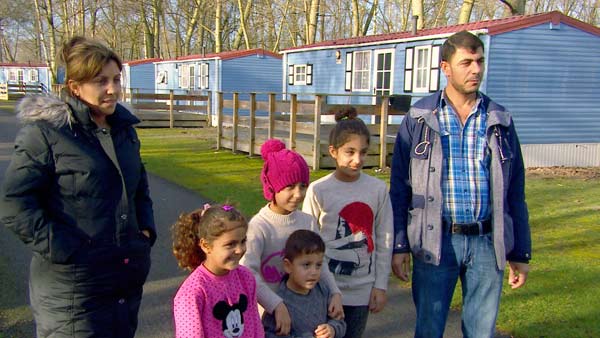 Looking at the world around us, there is no reason to think that the influx of migrants into Europe and the Netherlands will remain at the same level or even decrease. The combination of the effects of climate change with those of extreme population growth in Africa, where according to the United Nations Populations Division the population will increase fourfold from 1.1 billion to more than 4 billion, creates almost unimaginable projections for migration. In 2014 alone, according to the UN, 60 million people were forced to leave their homes due to the effects of climate change. The UN and various NGOs estimate that that figure will increase to between 150 and 200 million by 2050. Like war refugees, the majority of climate refugees and the hundred million new Africans who move to cities will do so within their own region. But if even one per cent of the new Africans move to Europe that will mean some 30 million people, whereas according to the IOM (International Organization for Migration) there are currently around 5 million Africans in the EU.
Looking at the world around us, there is no reason to think that the influx of migrants into Europe and the Netherlands will remain at the same level or even decrease. The combination of the effects of climate change with those of extreme population growth in Africa, where according to the United Nations Populations Division the population will increase fourfold from 1.1 billion to more than 4 billion, creates almost unimaginable projections for migration. In 2014 alone, according to the UN, 60 million people were forced to leave their homes due to the effects of climate change. The UN and various NGOs estimate that that figure will increase to between 150 and 200 million by 2050. Like war refugees, the majority of climate refugees and the hundred million new Africans who move to cities will do so within their own region. But if even one per cent of the new Africans move to Europe that will mean some 30 million people, whereas according to the IOM (International Organization for Migration) there are currently around 5 million Africans in the EU.
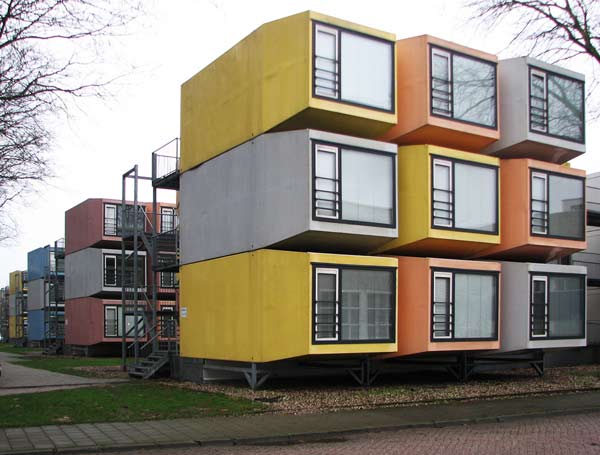 The pressures that force people to come to our region from elsewhere in the world are expressed in the dramatic images of hundreds of thousands of people crossing the Mediterranean Sea in boats and the residents of the now almost permanent ‘Calais jungle’. But we also see it in the outskirts of London where African entrepreneurs breathe new life into abandoned shopping centres with wholesale outlets and online supermarkets for products from Somalia, Eritrea, Ghana, Nigeria, etc. Alongside the grim images of the confrontation between migrants and ‘Fort Europe’ there are also the informal networks in which illegal immigrants, asylum seekers and those refused asylum mix with those with refugee status and the Dutchmen, Englishmen, Frenchmen or Germans with African roots who have an entire economy of their own.
The pressures that force people to come to our region from elsewhere in the world are expressed in the dramatic images of hundreds of thousands of people crossing the Mediterranean Sea in boats and the residents of the now almost permanent ‘Calais jungle’. But we also see it in the outskirts of London where African entrepreneurs breathe new life into abandoned shopping centres with wholesale outlets and online supermarkets for products from Somalia, Eritrea, Ghana, Nigeria, etc. Alongside the grim images of the confrontation between migrants and ‘Fort Europe’ there are also the informal networks in which illegal immigrants, asylum seekers and those refused asylum mix with those with refugee status and the Dutchmen, Englishmen, Frenchmen or Germans with African roots who have an entire economy of their own.
A portion of the money people earn in the Netherlands is funnelled back to their country of origin. The African Studies Centre in Leiden reported in 2011 on investments by Amsterdam-based Ghanaians in housing in Accra, while the architect Bernd Upmeyer recently published a fascinating study entitled Binational Urbanism, which documents people of Turkish origin who live in and invest in property in both Kreuzberg in Berlin and in cities in Antalya Province. These transnational or binational spaces constitute an important economic exchange between these countries that is entirely separate from international trade or diplomacy. It is bottom-up globalisation with direct visibility at the level of the street and the neighbourhood.
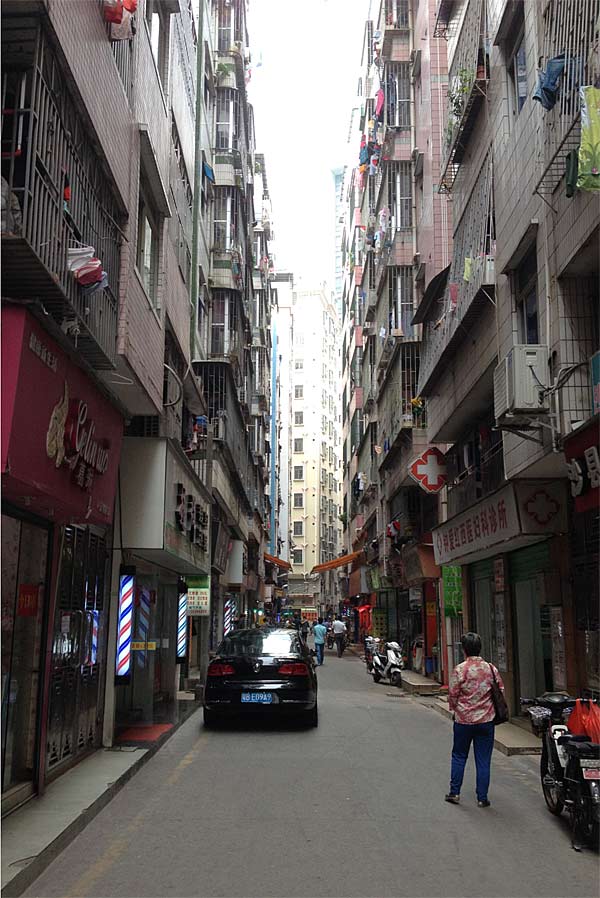
The increasing pressure of so-called economic migrants and asylum seekers on our borders and the conflicts in our neighbouring regions will undoubtedly lead to political debates and probably to drastic changes in how we deal with migration, the precise nature of which we cannot predict. But we can be sure that migrants in all their diverse guises will become ever more present and that ‘the system’ will be forced to change. The distinction between the migrant and non-migrant will be blurred and the common ground between the refugee, the asylum seeker, the immigrant, the migrant worker, the research fellow, the student, the guest professor, the intern, the au pair and the pied-à-terre owner will become increasingly clear. And that common ground is that they lead a flexible and uncertain existence in which their adaptability and mobility is crucial to achieving the happiness they seek.
If the future unfolds as outlined above our cities will increasingly be characterised by a coming and going of people, population growth and contraction, the emergence and disappearance of amenities and enterprises, and a constantly changing racial profile.
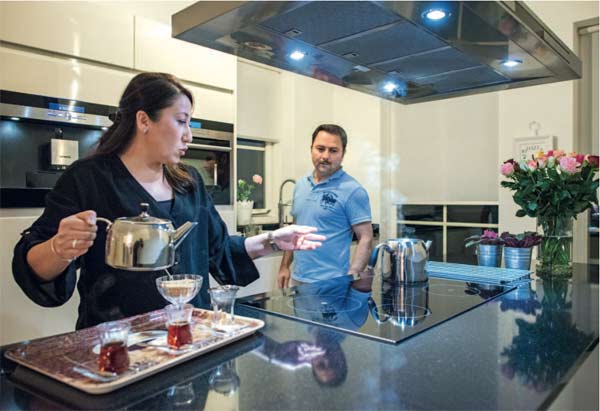
What does designing and planning a City of Comings and Goings mean in concrete terms? We might begin with the acute problem of asylum seekers and refugees who are now leading a difficult existence on the margins of the Netherlands with children that have no access to normal levels of care and education. The question is: where do we want these people to rebuild their lives? Where do we want them to ‘make a contribution to society’? Instead of isolating them in marginal parts of the Netherlands, we could welcome them in those regions where there are jobs and where the scale and diversity of welfare and education provision is better equipped to deal with population surges; in other words: in the urbanised landscape of North Holland, South Holland, Utrecht and North Brabant.
It is not only the social and economic opportunities that are greater in the Randstad. In the more densely populated western part of the Netherlands there are areas where the arrival of new residents can have a positive influence, for example in cities with an ageing population and declining amenities.
Former centres of urban development such as Zoetermeer, Capelle, Purmerend and Spijkenisse are well connected with the infrastructure, amenities and jobs of the Randstad and they also have space for transformation and growth. New shops, work places and, above all, new generations of students and customers would breathe new life into these old growth centres. A benefit of the older new towns, such as Almere, is that they are already very popular with the immigrant middle classes, who buy or build houses here, for example in the Homeruskwartier. These existing networks of earlier immigrants can ease the process of social and economic integration for their newly arrived compatriots. For example, there are many municipalities, including Vathorst, Lansingerland and Leidsche Rijn, with incomplete Vinex locations, for which the land purchases have already been made but the project development in line with the Vinex model has not yet begun. Here too there is a need for a new generation of residents and a new impulse for thinning provisions. Despite the fact that anti-immigration parties such as the PVV enjoy a relatively high level of popularity in the growth centres and Vinex neighbourhoods, these are also areas with a strong middle-class, immigrant presence and therefore a breeding ground for further internationalisation. And a dynamic economy fed by immigration will eventually reverse the socio-economic stagnation that leads to votes for xenophobic and racist parties such as the PVV.
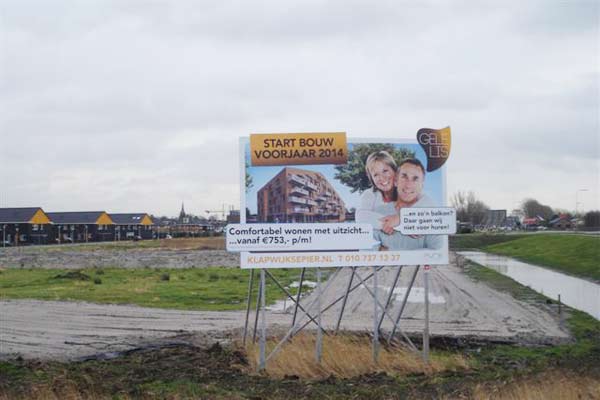
Finally we can also include the many peripheral office locations and industrial estates, which are largely empty, especially in growth centres, among the category of well-connected locations. They are unpopular places among established residents and businesses but as development locations may well offer potential for internationally oriented newcomers.
Journalist Doug Saunders’s book Arrival City describes neighbourhoods or entire cities where new immigrants are received, from Slotervaart and Thamesmead to Shenzhen and North Mumbai. Can we actively build such ‘arrival cities’ in the Netherlands? Can we design these places so that they offer the freedom and networks for new groups to integrate into the Dutch economy? If so, what requirements would such developments have to meet? We would need to review our property market and housing policy to create flexibility and dynamism rather than obstacles. We would need to look at how the construction industry functions and the legislation relating to zoning and the environment. We would need to subject the new National Environmental Vision currently being formulated by the State to a critical review in terms of the flexibility, temporary housing, enterprise and networks. We would need to look simultaneously at the environmental policies of local authorities and how they can actively offer space to the economic and social dynamic of migration. We would need to consult with social welfare organisations, local authorities and businesses to examine how we can employ public amenities as fixed beacons for neighbourhoods typified by change. We must try to understand what role public spaces in general can play as sites for encounters and exchanges between the nomadic citizens of the twenty-first century. Nonetheless, to bring together all these issues and to make visible the consequences and possibilities of a City of Comings and Goings the urban planning design is of crucial importance and must even be the starting point. Making the combined significance of the various implications of immigrant-rich neighbourhoods and cities visible and concrete is indispensable for their integral development and also for a social debate. Using urban planning images we can visualise the broad significance of migration for our cities and escape the simplistic dichotomy of the expat or the refugee, the migrant worker or the international student. We need images and models of a city or a street in which migration is a phenomenon that citizens share rather than driving them apart.
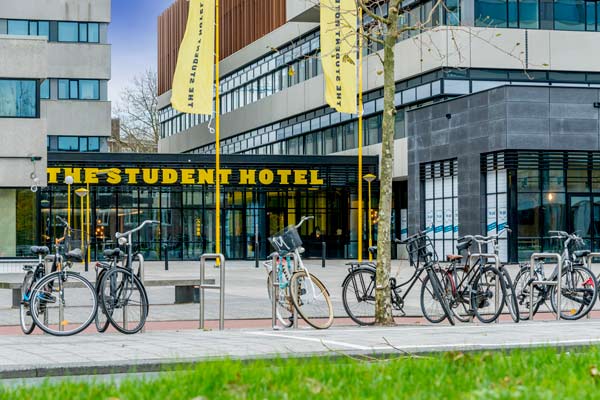
Given the urgency of the refugee crisis, Dutch design (and the Netherlands as a design) owes it to its reputation to embrace migration as an enormous impulse for the development of the cities and neighbourhoods of the future. Design-driven research is important to visualise and simulate scenarios and innovative combinations. But concrete projects are also needed to create ‘facts on the ground’ and to gain real experience.
After all, we need real places where those citizens who require mobility and flexibility can come together, whether they be young native entrepreneurs with a large international network, students who want to live inexpensively in a dynamic neighbourhood for three or four years, the newly arrived refugee who wants to build a new life, or the migrant worker who needs a Dutch base for his transnational existence. Can the Netherlands, with its institutionalised planning and design, create such places that will connect us with the world? Can we create a City of Comings and Goings, one that does justice to the diversity and energy of the Génération Bataclan? [modula id="2111"]